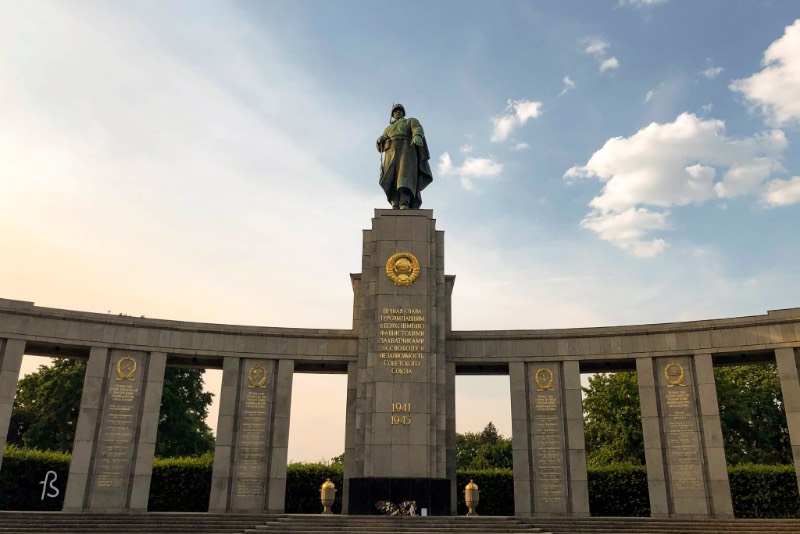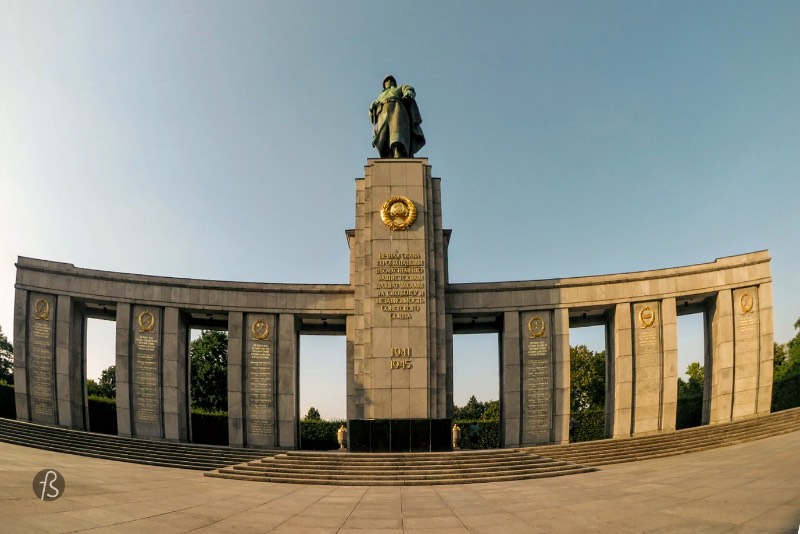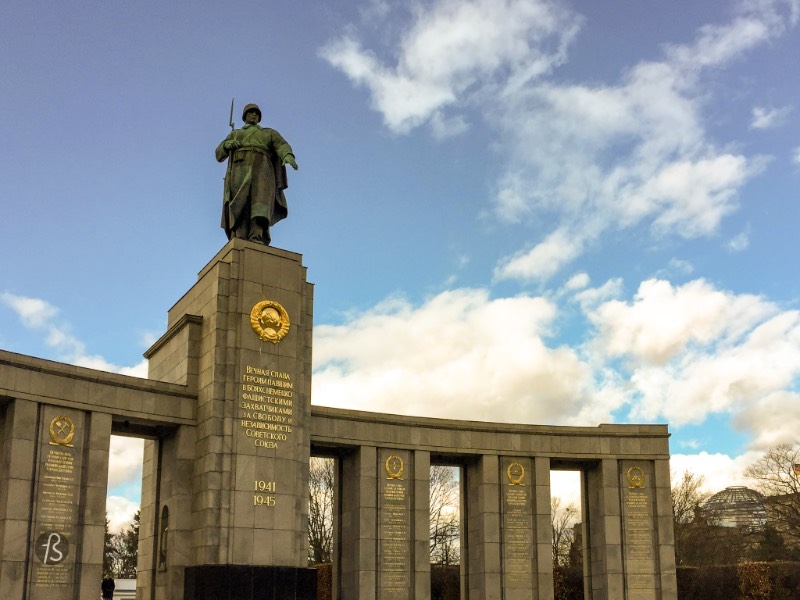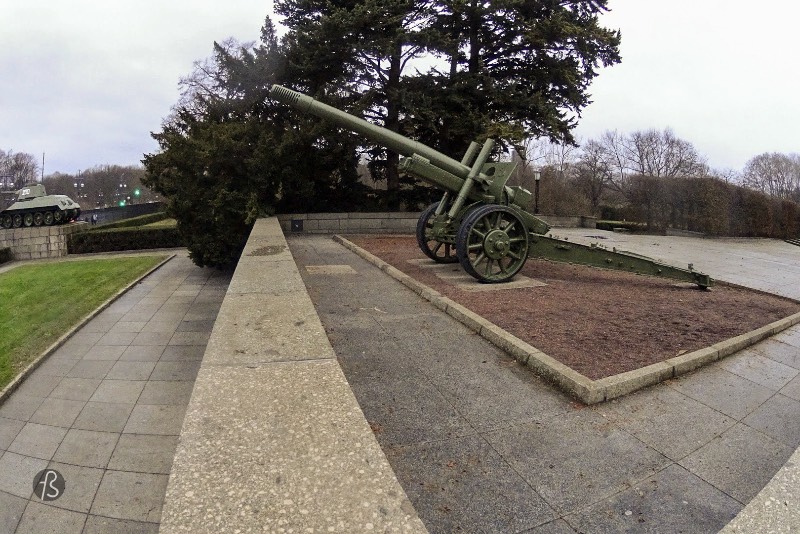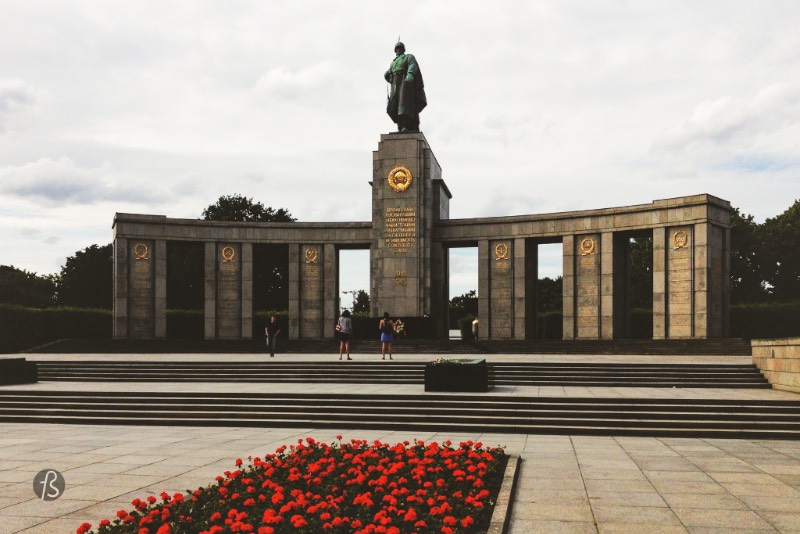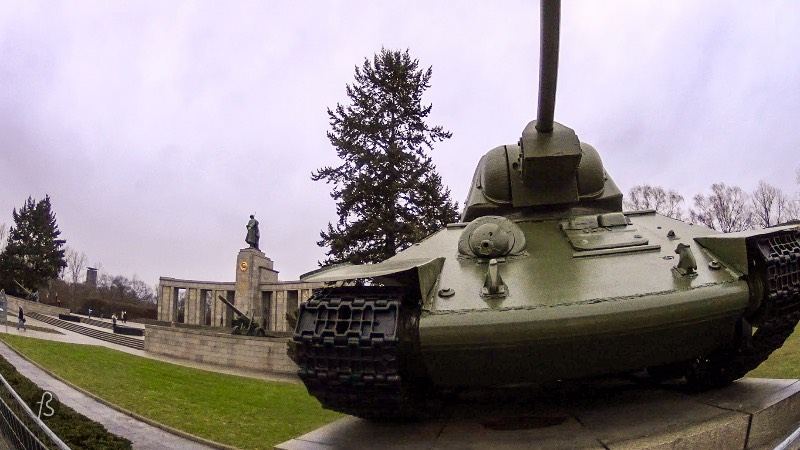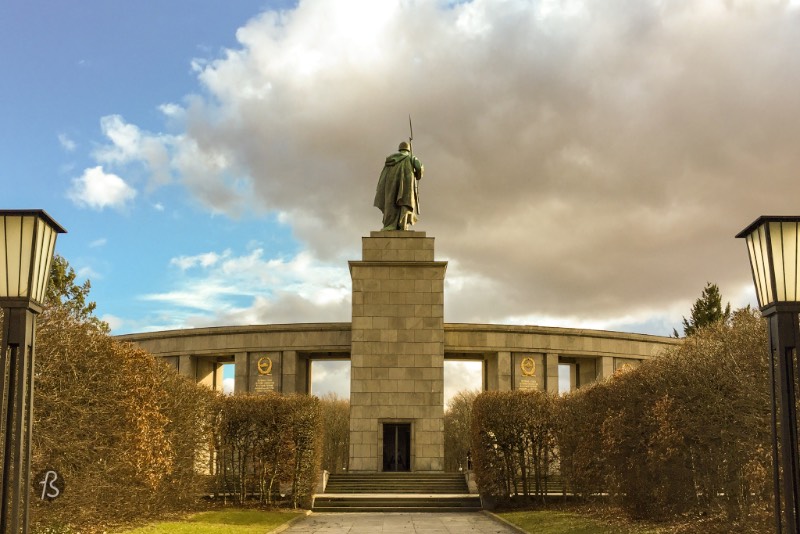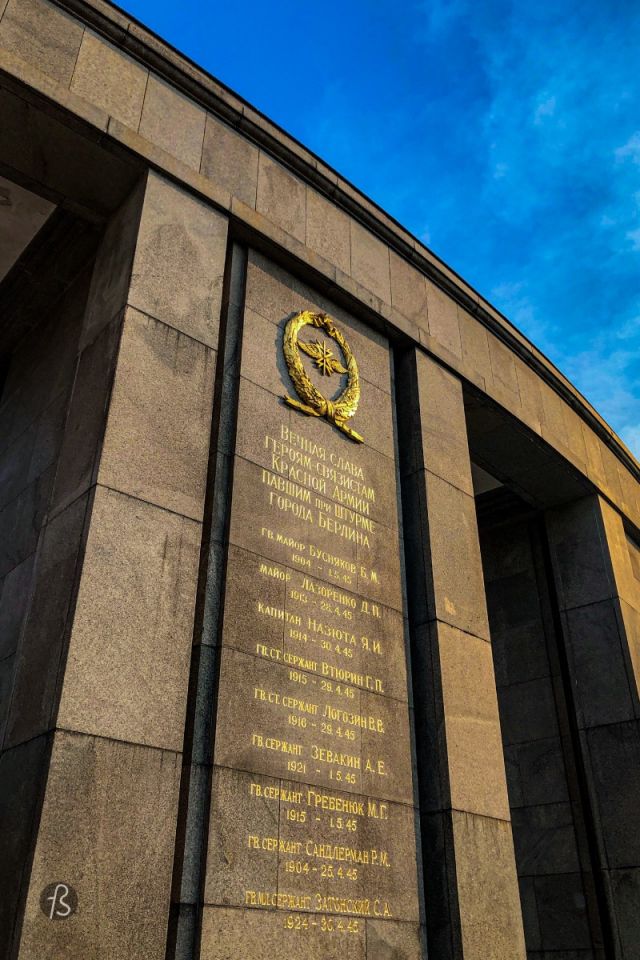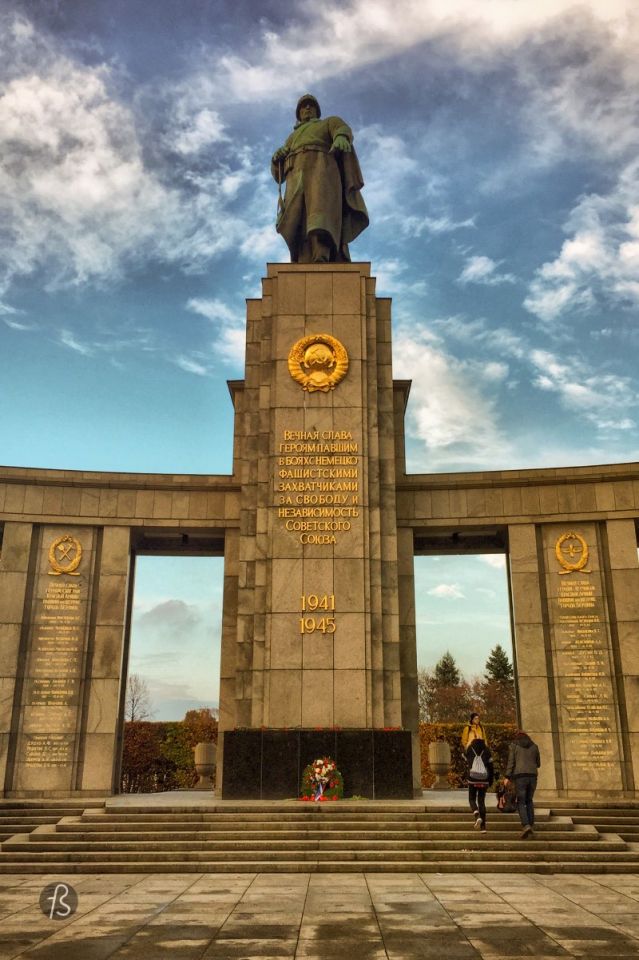The Soviet Memorial in the Tiergarten is one of the many war memorials that can be found around Berlin. From the prominent memorials erected by the Soviet Union after the end of the Second World War, this is the most famous and most visited since it lies close to Berlin’s leading tourist destinations.
I have been there a few too many times since it can be found on Straße des 17. Juni and it is easy to drop by whenever a friend wants to visit Potsdamer Platz, Brandenburger Tor, and the Reichstag. This is the reason why the pictures here seem to be taken on different days. They were taken between 2012 and 2019, and I decided to add them all here to provide a more complete view of this special place in the center of the city.
During the infamous Battle of Berlin, in the last few weeks of the Second World War, it’s estimated that more than 80,000 Soviet troops died fighting to take Berlin from the Nazis. Because of this, there are three large Soviet memorials around the city. They are more than just monuments since they are also war cemeteries. In the backside of it, between 2,000 and 2,500 soviet soldiers were laid to rest.
A bit of the history behind the Soviet Memorial in the Tiergarten
The Second World War was over at the beginning of May 1945. And Berlin lay in ruins for years after that. It was interesting to me when I first found pictures of the Soviet Memorial in the Tiergarten standing in the middle of the debris of a ruined city. The memorial was unveiled to the public in November 1945. The Tiergarten was still in ruins due to incendiary bombs and its trees being removed to be used as timber wood in the last months of the war. Because of all this, the image of a Soviet memorial in the middle of the ruins caught my attention before I even visited the place.
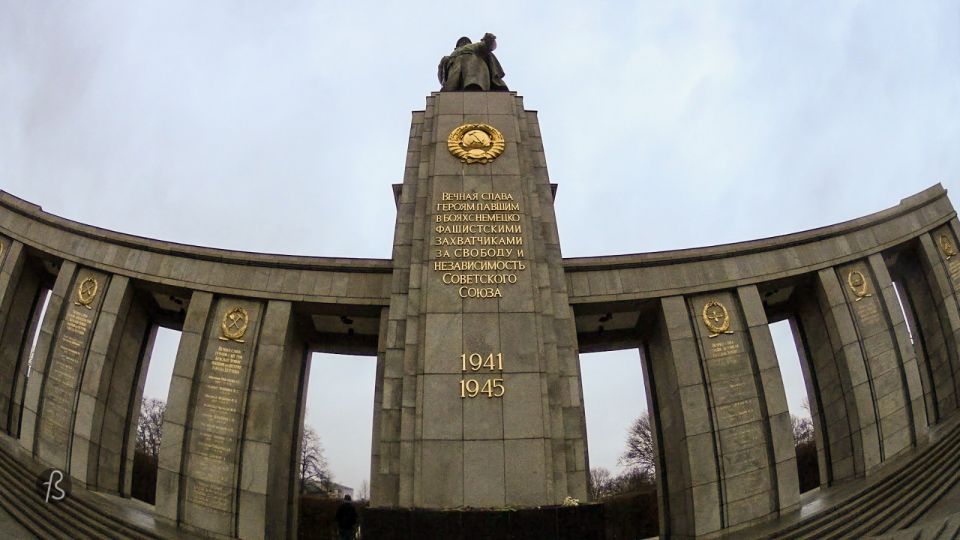
Designed by the architect Mikhail Gorvits, the center of the memorial is an eight-meter-tall statue of a Soviet soldier standing up with his rifle over his shoulder in a position representing the end of a battle. His left hand above the graves of the soldiers that rest there.
Below it, you can see an inscription in Russian that can be translated as “Eternal glory to heroes who fell in battle with the German fascist invaders for the freedom and independence of the Soviet Union.” The statue sculptors Vladimir Tsigal and Lev Kerbel, who also designed the bust of Karl Marx in Chemnitz.
Even though this is a Soviet memorial, it was located in the British sector of the divided Berlin during the Cold War. After the Berlin Wall was erected, back in 1961, the monument was seen by some as a sign of provocation from the Soviet Union and communism. Soviet honor guards were sent from East Berlin to protect the memorial and stand to watch there. In 1970, a neo-nazi called Ekkehard Weil shot and wounded one of the Soviet guards in a right-wing terror attack.
Personally, I find it quite interesting to be able to visit a piece of history like this in the middle of Berlin. It’s essential to keep in mind the sacrifice of those who fought fascism and defeated Nazi Germany. For this, I feel like this is a genuinely vital place to visit while in town.
The location is also attractive when you learn that Albert Speer was planning to build the center of World Capital Germania in the same area. Nazi Germany and fascism lost, and now this is a place for commemorating those who died in the war.
The Soviet Memorial on Treptow is also an interesting place to visit and the one on Schonholzer Heide is a bit unknown but you see it as well.
The Soviet Memorial in the Tiergarten is a comfortable place to visit since it can be found on Strasse des 17. Juni at walking distance from the Brandenburger Tor on one side and the Siegessäule on the other. You can see it better on the map below.
Soviet Memorial in the Tiergarten
Str. des 17. Juni 4, 10557 Berlin
